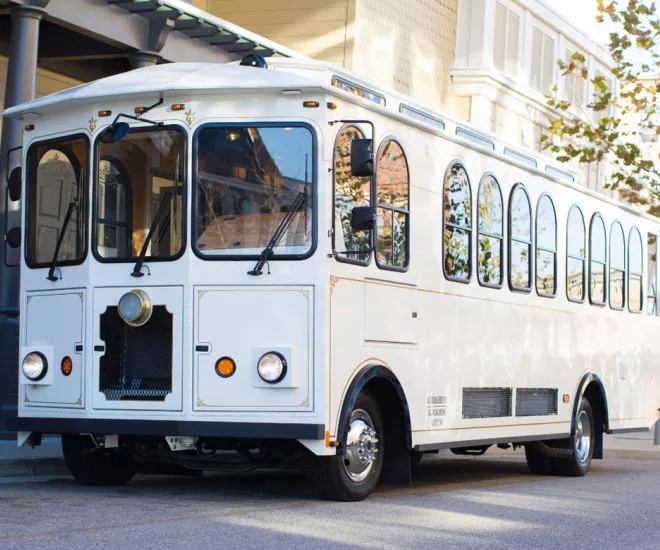The History of German POWs in Myrtle Beach

Myrtle Beach 80 years ago
2024 marks the 80th anniversary of one of the most significant days during World War II: D-Day, the Allied Invasion of Normandy. On Tuesday, June 6th, 1944, Americans went by boat to Omaha Beach to fight Germans. A mere forty-eight hours later on Thursday, June 8th, Germans came by train to Myrtle Beach to help Americans.
The first wave of German POWs arrived at the Myrtle Beach train depot having come via rail by way of a camp in Florence. They were brought here during WWII to supplement the work force in the local timber industry, on area farms and at the town’s Army Air Corps airfield.
As the Allied Forces captured more and more POWs, they became less and less capable of caring for them within the guidelines of the Geneva Convention. Our country taking POWs back stateside served two purposes. It took the responsibility off our allies in Europe who couldn’t properly handle them, and it gave us an insurance policy of sorts. As we needed to bring our empty troop carriers back to The States for safety, having German POWs aboard would reduce our risk of being attacked by a German U-boat or sub.
The first POWs began arriving in the United States in April of ’42. By the following year, The US Army’s Provost Marshal General, who oversaw the care of the POWs, implemented the National Works Program where farmers, businesses and industries could pay the government to hire the prisoners as labor. Also in 1943, radicalized Nazis were removed from the general population and sent to special camps like in Alva, Oklahoma, or Aliceville, Alabama. That left about 80% of the prisoners around the country generally content to just ride out the war.
Myrtle Beach wasn’t eligible to have POWs here at first. One of the initial rules was that a camp couldn’t be any closer than 75 miles from a border. For us, the Atlantic Ocean was our border. But, by 1944, the rules were relaxed and if a municipality could show proof of need, which we could, and had a place to keep them-- we had an Army Air Corps airfield—we too could benefit from the National Works Program. There were about 250 POWs in the first wave of the eventual 600 who came by war’s end.
Prisoners were not required to work more than twelve hours each day and must have twenty-four hours rest in addition each week. Officers were not required to work at all, but often did to ward off boredom and to earn money. Prisoners’ pay differed whether they were an officer or not, and whether they worked on or off base, but none were paid in cash. They were issued coupons that were only redeemable at the camp canteen.
At the very least, they earned the equivalent to an American private’s income, eighty cents a day, but could earn more if they took the work trucks to the farms and timber sites. Almost half the men, about 250, worked in timber. It was the most dangerous of the jobs, but it paid the most.
Per the Geneva Convention, POWs had to be kept in a climate similar to that of where they were captured so that they would already have the proper clothing and other essentials for the location. Our prisoners were fighting in North Africa and the South of France when they were taken into US custody.
It took almost a year for some of them to get here. After their voyage across the Atlantic, they boarded trains from New York or wherever their boat landed to finally end up here. The long trip gave them the opportunity to see for themselves that the propaganda that they had been fed back home about America being bombed out and on the verge of collapse was anything but true. It also gave them time to figure out that maybe the other negative information about Americans may not be true either.
Myrtle Beach had an advantage in getting our POWs so late in the process. By June of 1944, most of the kinks in the program had been worked out so we had a pretty smooth time of it for the almost two years that they were here.
That’s not to say locals weren’t on edge when they first arrived. My mother-in-law was five years old, living in nearby Conway, then and she had two great fears at that age: John Henry, the rooster who would chase her around the yard, and German POWs. She’d hear that train coming through Conway and she just knew that it would stop, the Germans would escape and get her. They were the boogeymen to her. A lot of people felt that way, not just children. But in time, these misrepresentations would be replaced with cordial relationships.
When the first prisoners arrived, they were taken to what would be a temporary camp about two miles north of what was the Ocean Forest Hotel between what is now North Ocean Boulevard and Kings Highway at 70th Avenue North. From where the Caravelle Resort is on the Boulevard and that shopping center is on Kings Highway was where the prisoners were kept. The camp was basically just barbed wire and four-man tents with about 30 guards and was only used until the prisoners could build their own barracks at the Army Air Corps airfield.
That didn’t happen until Veterans Day, November 11, of that first year. Certain prisoners who had skills in carpentry, electrical work and the like, were reassigned from their timber details and taken to what is now Myrtle Beach’s first disc golf course. The name of the course is the same as the nickname that had been given to the hastily built wooden buildings of our Army Air Corps airfield. The name is Splinter City.
The POW camp was constructed adjacent to those structures and fairly near Kings Highway, across from the original entrance to the Myrtle Beach State Park. We know from local history books that the new camp was inspected in November of 1944 by an international observer from Switzerland who worked for the International YMCA. What we don’t know is if the camp was constructed by November because it was known that the inspection was scheduled then or that the inspection was scheduled once the camp was completed. Or it could be that the prisoners were kept in the tented camp at 70th Avenue from June to November because the balmy Myrtle Beach weather permitted it. But by November, it gets a bit nippy out in the evenings and a real roof over their heads was what the prisoners required by that time.
On the 80th anniversary of their arrival, June 8, 2024, from 9 AM to 3 PM, a motor coach tour will take guests to historically significant locations in both Myrtle Beach and neighboring, Conway, South Carolina, for them to see where the POWs arrived, where they lived, experience how they worked, enjoy what they ate, and hear what it was like for them from 1944 to 1946. Stops include a living history farm, county museum and an all-you-can-eat Southern buffet.
This one-day-only event would make a unique gift for a WWII history buff. Guests will board the coach at 8:45 AM on Saturday, June 8, 2024, in front of the Grand 14 Theater at The Market Common in Myrtle Beach, beside the airport. There is ample free parking there. Guests are encouraged to dress for the weather as the event will occur rain or shine. A light sweater for air-conditioned spaces, a bottle of water, and shoes suitable for walking around a farm are suggested. For tickets, click here.
